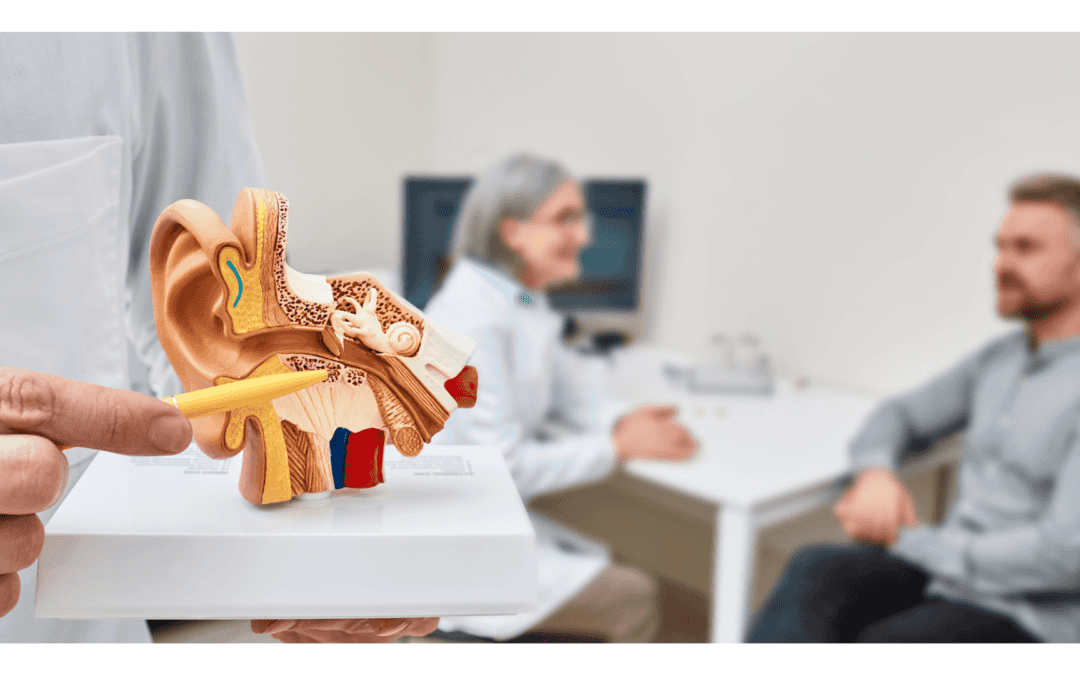Sensorineural hearing loss occurs when the hair cells in the cochlea or the auditory nerve are damaged. The cochlea, a spiral-shaped organ in the inner ear, contains thousands of tiny hair cells that convert sound vibrations into electrical signals. These signals are then sent to the brain via the auditory nerve for interpretation.
When the hair cells in the cochlea or the auditory nerve get damaged, the transmission of sound signals to the brain is impeded. Consequently, it becomes difficult to hear soft sounds, and even louder sounds may be unclear or distorted.
Causes of Sensorineural Hearing Loss
Several factors can contribute to sensorineural hearing loss. Understanding these causes can aid in prevention and early detection.
Presbycusis, or age-related hearing loss, is one of the most common causes of SNHL. As individuals age, the hair cells in the cochlea may gradually deteriorate, leading to a reduced ability to hear high-frequency sounds.
Exposure to loud noises, such as music concerts, machinery, or explosions, can permanently damage the hair cells in the cochlea. This condition, known as noise-induced hearing loss, often develops gradually over time.
Certain infections and diseases can also lead to sensorineural hearing loss. Viral infections like measles, mumps, and meningitis can damage the inner ear or the auditory nerve. Additionally, illnesses like Meniere’s disease or acoustic neuroma, a benign tumor on the auditory nerve, can cause SNHL.
Some medications harm the inner ear, leading to sensorineural hearing loss. These ototoxic drugs include certain antibiotics, chemotherapy drugs, and diuretics. It is important to monitor hearing when taking such medications, especially in high doses or for extended periods.
In some cases, SNHL can be inherited. Genetic mutations can affect the development and function of the inner ear, making individuals more susceptible to hearing loss.
Symptoms of Sensorineural Hearing Loss
Sensorineural hearing loss can manifest in various ways. Early detection of symptoms can lead to timely intervention and better management of the condition.
One of the most common symptoms is difficulty hearing soft sounds. This issue often becomes noticeable when trying to follow conversations in noisy environments.
Another symptom is trouble understanding speech. People with SNHL may perceive muffled or distorted speech, causing challenges in communication.
Tinnitus, or ringing in the ears, is a frequent symptom of sensorineural hearing loss. This ringing can vary from a mild nuisance to a debilitating condition, affecting concentration and sleep.
In some cases, SNHL may also be accompanied by imbalance or dizziness. The inner ear plays a critical role in maintaining balance, and damage to this area can result in vertigo or unsteadiness.
Diagnosis and Treatment Options
Proper diagnosis and treatment of sensorineural hearing loss can significantly improve the quality of life for those with it. Several approaches are available to managing this condition.
To diagnose SNHL, a hearing health professional conducts a series of hearing tests. These tests measure the ability to hear different pitches and volumes, helping identify the type and degree of hearing loss.
Hearing aids are a standard and effective treatment for sensorineural hearing loss. These small electronic devices amplify sounds, making hearing and understanding speech easier. Modern hearing aids are sophisticated and can be customized to fit individual hearing needs.
For severe or profound SNHL, cochlear implants may be recommended. Unlike hearing aids, cochlear implants bypass damaged hair cells and directly stimulate the auditory nerve. This option can significantly improve hearing for those who do not benefit from hearing aids.
Assistive listening devices, such as FM systems or amplified telephones, can also be helpful in specific situations. These devices enhance sound in challenging listening environments, making it easier to hear and communicate.
Preventive Measures
While not all cases of sensorineural hearing loss can be prevented, taking certain precautions can help reduce the risk.
Using ear protection in noisy environments, such as concerts, construction sites, or when using loud machinery, can help prevent noise-induced hearing loss.
Regular hearing check-ups can help detect hearing loss early. Early intervention can slow the progression of SNHL and improve outcomes.
Conclusion
Sensorineural hearing loss is a complex condition with various causes and symptoms. Through proper diagnosis and treatment, individuals can manage their hearing loss effectively and maintain a high quality of life. Early intervention and preventive measures can make a substantial difference for those affected by SNHL.


